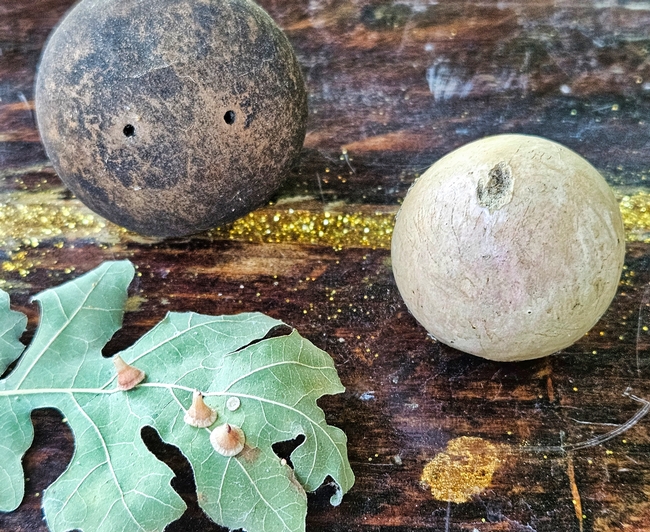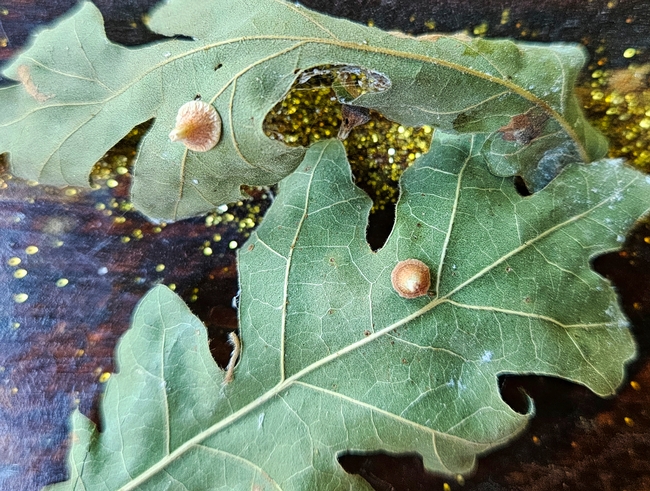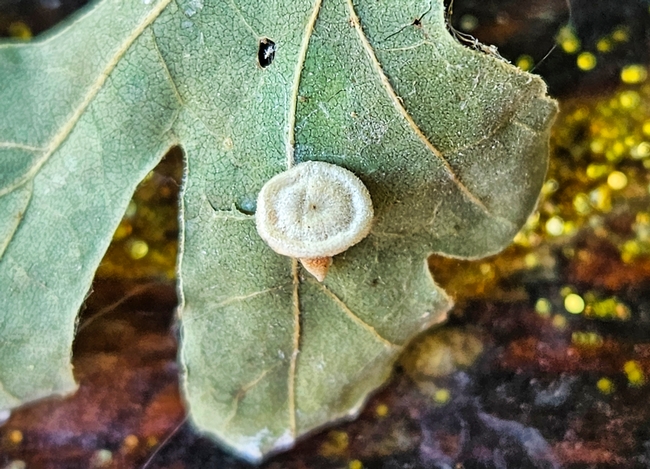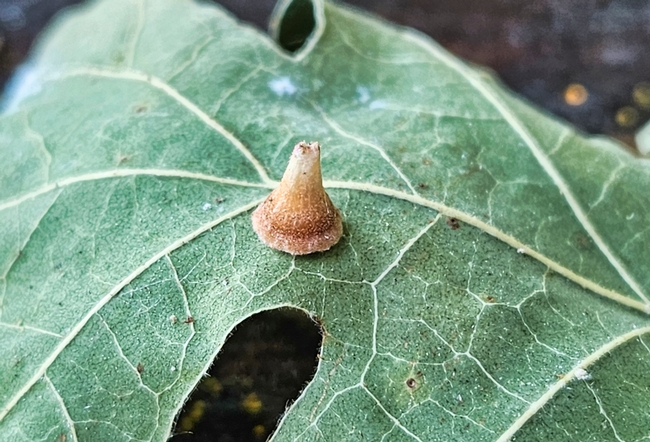Our neighboring tree is a wonderful old Oak that majestically towers over our homes, seeming to watch over us and keep us immersed in delightful nature. In late summer and early fall, the tree drops many interesting bits into our yard, such as acorns that feed squirrels and oak galls, ball-shaped growths that cluster in the high branches.
I did some research and found the process for producing the oak balls to be fascinating. A tiny oak gall wasp drills into a twig or leaf of the tree and places an egg inside the plant tissue. While laying the egg, the wasp will add a chemical secretion that causes abnormal cell and oak tissue growth that turns into the gall. The gall becomes a shelter for the wasp eggs, providing safety and nourishment to the larvae without harming the tree. You can identify where the adult wasps exit the gall by the small holes on the gall, and fear not - the wasps are small and are not a threat to people.
At this time of the year, the oak tree begins shedding its leaves. I noticed that many of the leaves have many small reddish-brown, cone-shaped objects stuck to the surface. Our picnic table under the oak tree is littered with these little cones, and from some research I discovered that they are also a type of gall growth triggered by the red cone gall wasp.
It turns out that there are many different types of galls that spread through many trees and plants, but oaks are susceptible to these growths since they host many types of insects. The type of gall growth is distinct to the chemical secretions from each insect. The gall-making organism includes wasps, mites, aphids, beetles, moths, as well as fungi, bacteria, and nematodes. The galls range in size from less than 1/16 of an inch to 2 inches and can develop into different shapes and colors.
I have always enjoyed tending to my garden, but my time as a master gardener has taught be to become more observant and curious about science behind the wonders of nature… always something new to learn.
Check out this website that shows pictures of the many galls: https://joycegross.com/galls_ca_oak.php.



